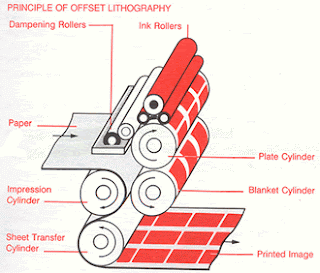Notes 1
Notes 3 & 4
Rotary printing see examples
Offset Lithography (Litho) - etched alluminium plates are wrapped around a cylinder.
Rotogravure (Gravue) - Copper plates used, more refined and durable. Suitable for massive print runs.
Flexography (Flexo) - Polymer plate, not as good registration but ideal for plastic stock.
Digital printing see examples
RIP (Raster Image Processor) software is used and is good for small print runs (-500).
Screen Printing see examples
Automated machines for huge print runs. Lots of arms with lots of inks. Not just one screen used.
Pad printing see examples
Transfer of a 2D image onto a 3D object.



























